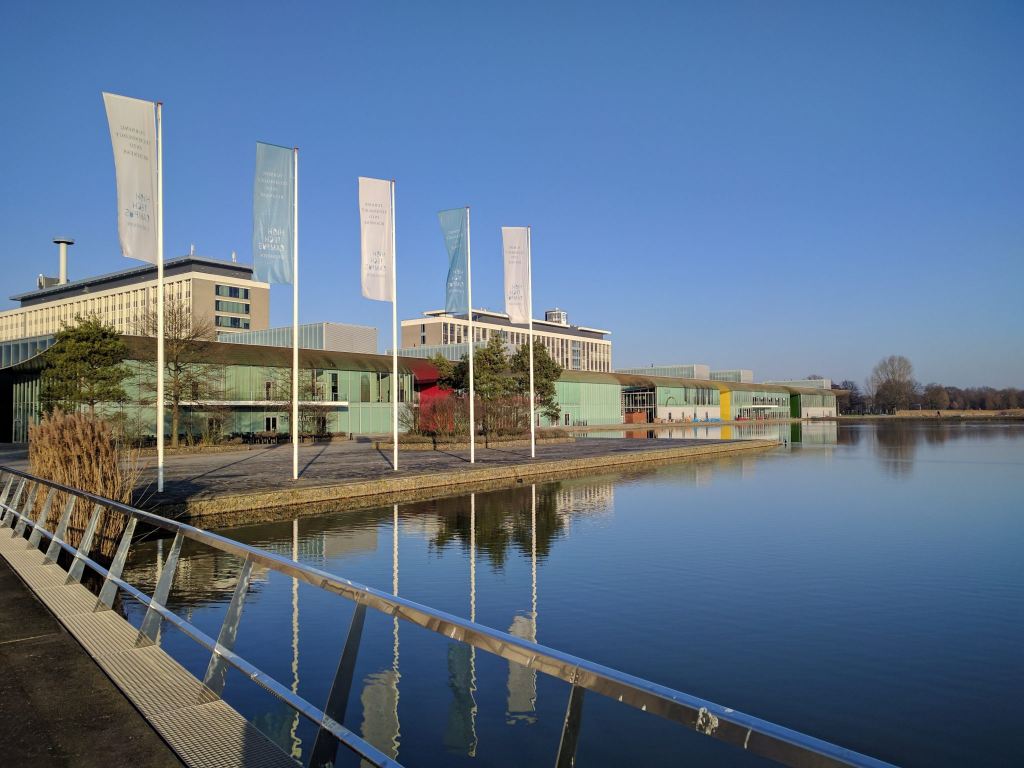
A regional reflection: The Dutch High Tech and Semiconductor region in the Brainport Eindhoven is responsible for approximately 40 percent of all patents in the Netherlands. Patents, one of the innovation parameters, show us that the Dutch are an innovation powerhouse in hardware innovation. Two (of the many) reasons are the presence of strong campuses like the High-Tech campus, the Eindhoven University of Technology, Brainport industry campus, Helmond Automotive campus amongst others.
The campuses shape a unique start- and scale up climate that fits Brabant’s entrepreneurship. Another reason is the presence of global (often Dutch found and hardware-oriented) companies like ASML, NXP Semiconductors, Vanderlande, VDL group, Signify (previously Philips Lightning, Philips Royal amongst others.
These names are all powerful brands and have (from origin) Dutch origins. Also, these organizations have a strong need to ensure their innovation leadership.

Focus
A strong need does not make It easy. It is an interesting time for hardware-focused organizations as several of them are intertwined in a series of developments and challenges such as geopolitical developments which impact inorganic growth agendas, (raw) material shortages are part of the daily business which gives a greater focus on current hardware output; and talent is which is an increasingly severe challenge cross the board.
When we take a closer look at the key priorities of organizations, we see a set of enabling dependent priorities to secure their future vision and market position.

Value continuous to shift from hardware to software
Value continuous to shift from hardware to software and from product to services. To stay front-runner in hardware innovation, software and services are a significant component to realize that ambition. Today’s senior leadership agendas in High Tech and Semicon are focusing on: What are key enablers for hardware organizations to transform into digital R&D organizations? How do we build digital capabilities that can scale as fast as our customer demand?
- Integrate ‘data and analytics’ everywhere along the value chain: Lack of an enterprise-wide strategy for data, data and analytics capabilities, as well as poor data quality and siloed data in legacy systems are holding organizations back to realize business value. Focus on developing an integral enterprise-wide data strategy establishing a strong and trustworthy data foundation, data governance, capability building and envisioning new data driven services for internal- and external customers with a high-level of self-service.
- Future engineering practices: R&D organizations are having a hard time to keep up with digitization. Products are changing fast, component complexity is increasing, bringing new products to market becomes more complicated. Differentiation on hardware innovation is getting a stronger software and data component every day. Digitized R&D, Journey to Cloud, Digital Twins, are strong enablers to differentiate from competitors.
- Supply Chain resilience: The world faces pressured and volatile global supply chains due to global material- and chip shortage, COVID-19 and other disruptions like Ever Given in the Suez Canal developments. Organizations need to (more than ever) identify supply chain critical paths, lower risks, optimize their supply chain networks, be adaptive and transparent in changing demand and delivery of goods.
- Transformation of Business Models and Processes: Moving from siloed functions to end to end processes. Enabling operating models to focus on modularity, flexibility, and speed to increasingly adapt to change and the introduction of new business models, core systems, new ways of working and (optimized) processes.
- Workforce and partner sourcing strategy: Organizations need to rethink their workforce strategy, and partner ecosystem to reach the requested business demand. Developing a hybrid workforce strategy including sourcing approach, future workforce engagement models, and learning & skill development in combination with strategic suppliers who can keep up with industry knowledge, domain knowledge and requested skill-sets & experience.
Hardware innovation re-invented
All these priorities will help you in stepping up and shape (hardware) products and related service in a way you could not before. It will help you differentiate, from an insights & action, R&D, flexibility, organization, and/or workforce perspective. One of the first steps if you want to integrate these topics on your corporate agenda is to address them in your (departmental) strategy. Focus with your teams on your workforce, (digital) capabilities and processes that enable and support these key priorities. Set a vision statement and define success. In parallel connect the dots with the broader ecosystem.

(Regional) Ecosystem differentiation
The power of differentiation is within the broader ecosystem play. How can you add additional value to your products and service with strong (regional) partners? How can you share and mitigate (e.g., Supply Chain) risks with the chain? In a world where geopolitics are influencing success as well, it is smart to understand/join the ‘broader’ region initiatives also.
European Chip Act
One of the initiatives we are excited about and relevant for the semiconductor industry, is the European Chips Act. This act will help the European (regional) competitiveness in semiconductor technology and applications. With a focus on amongst others the production capacity, research to more advanced chips and addressing the skill shortage.








